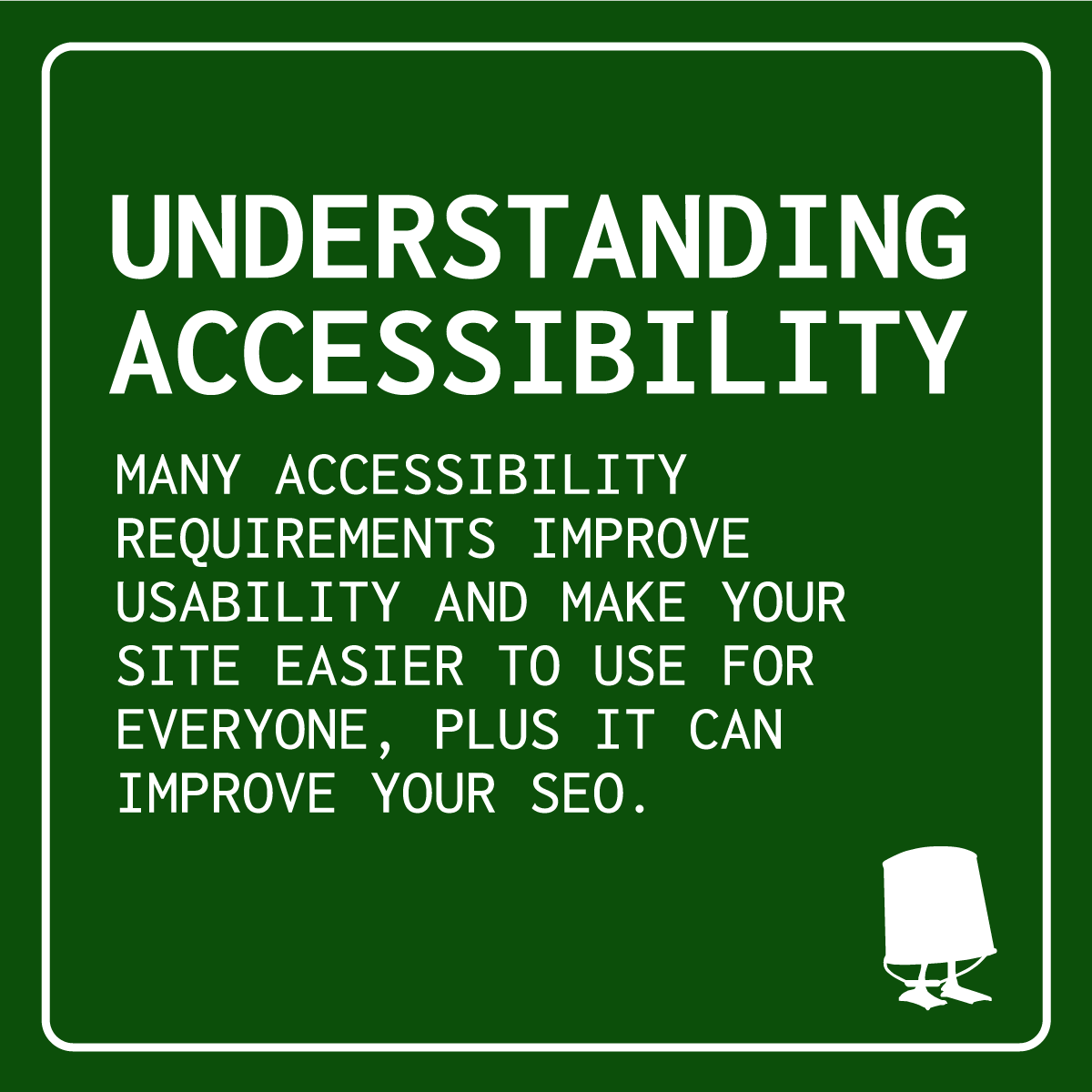Understanding accessibility
In today's digital age, creating an inclusive online experience is paramount. As more interactions, transactions, and engagements occur in the digital realm, it's crucial to ensure that websites are accessible to everyone, regardless of their abilities or disabilities. Accessibility isn't just a legal requirement; it's a moral imperative and a testament to a commitment to diversity and inclusivity.
Accessibility in web design refers to the practice of creating websites that can be used by people of all abilities and disabilities. This encompasses various aspects, including visual, auditory, motor, and cognitive abilities. Ensuring accessibility involves removing barriers that might prevent people with disabilities from interacting effectively with a website.
Key considerations for accessibility
Color contrast: Choose color combinations that provide sufficient contrast to ensure readability for users with low vision or color blindness. Tools like WebAIM's Color Contrast Checker can help in evaluating color contrast ratios.
Content structure: Use proper heading tags (h1, h2, h3, etc.) to create a logical and hierarchical structure for content. This aids navigation for users with screen readers and allows them to understand the organization of the content. The <h1> title tag should only be used once, for the primary title of a page. Avoid using it for anything other than this. (This is important for SEO as well). Don’t use a header format just because you want text larger – use a new CSS class to style the element. Otherwise it confuses screen readers. Don’t skip heading levels (for example, going from an <h1> to an <h3>), as screen reader users will wonder if content is missing.
Touch target size and spacing: Targets like buttons need to be large enough to touch accurately, a with minimum height and width of 40 pixels each. Include an inactive space around all active elements, also about 40 pixels.
Actionable elements: Links and other actionable elements must be clearly distinguishable, either by colour and/or by an underline.
Keyboard navigation: Ensure that all functionality and interactive elements can be accessed and operated using a keyboard alone. Not all users can use a mouse or touchscreen, so keyboard navigation is essential for accessibility.
Alternative text for images: Provide descriptive alternative text (alt text) for all images on the website. This helps users with visual impairments understand the content of the images through screen readers. Or if an image is just for decoration, alt text can be left empty so that screen readers are not distracted from the more important content on the page.
Accessible forms: Design forms with clear labels and instructions. Ensure that form fields are properly labeled and that error messages are descriptive and easy to understand.
Video and audio accessibility: Provide captions for videos and transcripts for audio content. This ensures that users who are deaf or hard of hearing can access the information presented in multimedia formats.
Responsive design: Create websites that are responsive and adaptable to different devices and screen sizes. This benefits users with disabilities who may use a variety of devices to access the web.
Focus indicators: Ensure that focus indicators are clearly visible and distinguishable. This helps users who navigate using a keyboard to understand where they are on the page and which element is currently in focus.
User testing: Conduct usability testing with people with disabilities to identify accessibility barriers and gather feedback for improvement. Incorporate accessibility testing into the development process to address issues early on.
Semantic HTML: Use semantic HTML5 elements to provide structure and meaning to the content. This helps screen readers and other assistive technologies interpret the content accurately.
Accessibility requirements aim to make websites work well for assistive technologies, including:
Screen readers that read the content of web pages out loud;
Screen magnifiers that enlarge web pages;
Modified keyboards or hardware that mimics the functionality of a keyboard;
Voice recognition software that is used to input text.
Many accessibility requirements improve usability and make your site easier to use for everyone, plus it can improve your SEO.
Creating accessible websites is not only a legal requirement but also a fundamental aspect of ethical web design. By considering the diverse needs of users with disabilities, website designers can create inclusive digital experiences that benefit everyone. Accessibility is not a one-time task but an ongoing commitment to continuously improve and refine the accessibility of websites. By following the principles outlined above and staying informed about best practices, designers can contribute to a more accessible and equitable online environment for all.
By considering the diverse needs of users with disabilities, website designers can create inclusive digital experiences that benefit everyone.

